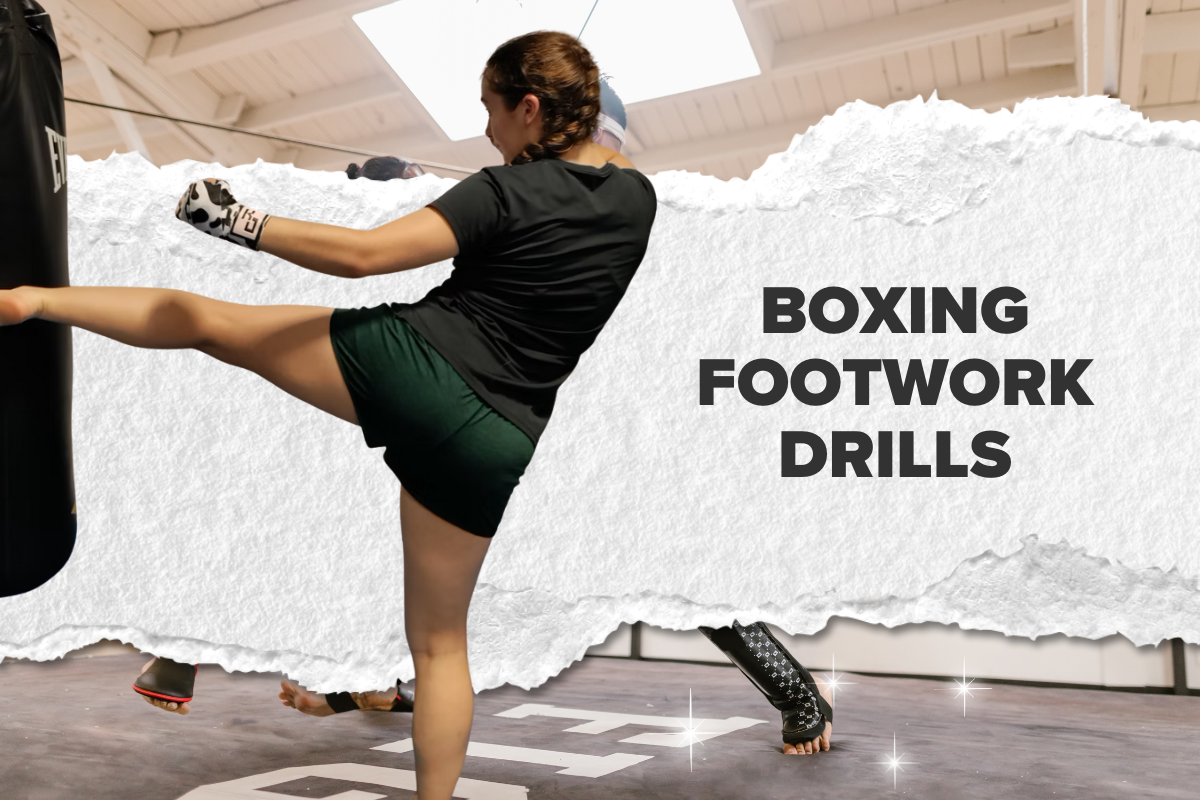Introduction
Shadow boxing is the art of fighting an imaginary opponent—and it’s one of the most powerful tools in a boxer’s training arsenal. Whether you're just starting out or you're a seasoned fighter, shadow boxing helps sharpen technique, build endurance, and develop mental clarity. This guide will teach you everything you need to know to make the most of this deceptively simple exercise.
Benefits of Shadow Boxing
Enhancing Technique and Muscle Memory
Practicing punches without resistance helps you perfect form and coordination. With repetition, your body begins to move more naturally and react instinctively in a fight or during drills.
Improving Footwork and Balance
Shadow boxing encourages smooth movement. You'll practice stepping, pivoting, and circling while staying balanced—a crucial skill in real matches.
Building Cardio and Endurance
A well-paced shadow boxing session gets your heart rate up quickly. As you integrate combinations and defense, you'll notice your endurance improves significantly.
Mental Visualization and Fight IQ
Shadow boxing allows you to simulate real fight scenarios. Imagining your opponent’s moves and crafting responses boosts your strategic thinking and fight awareness.
Essential Gear for Shadow Boxing
Do You Need Equipment?
One of the biggest perks of shadow boxing is that it requires little to no equipment. However, the right attire can enhance your comfort and effectiveness.
Recommended Attire and Shoes
Wear lightweight, breathable gear. KO Studio offers boxing gloves and wraps made specifically for women that you can wear even for shadow drills to simulate real movement. Choose flexible, non-slip shoes for better footwork.
Using Mirrors or Phones for Feedback
A mirror is your best tool for visual feedback. Alternatively, use your smartphone to record your rounds and analyze your technique, guard position, and flow.
Setting Up Your Space
Ideal Environment for Practice
All you need is a 6x6 foot area with no obstructions. Make sure it’s quiet and distraction-free for full focus.
How Much Space Do You Need?
You don’t need a gym—just enough room to move in all directions. If you're training at home, clear an area in your living room or garage.
Lighting and Distraction Control
Good lighting helps you see your form. Reduce distractions (TVs, clutter) to maintain mental engagement during rounds.
Understanding the Boxing Stance
Orthodox vs. Southpaw
If you're right-handed, you're likely orthodox (left foot forward); if you're left-handed, you're likely southpaw (right foot forward).
Proper Guard and Hand Positioning
Keep your lead hand near your cheekbone, rear hand near your chin. Elbows should protect your ribs. Chin tucked, shoulders relaxed.
Balance and Weight Distribution
Distribute weight evenly between both legs, resting on the balls of your feet. This enables quick movement in any direction.
Warm-Up Before Shadow Boxing
Dynamic Stretching
Begin with arm circles, shoulder rolls, and leg swings to loosen up the joints.
Joint Activation Drills
Focus on hips, knees, shoulders, and wrists—critical areas in boxing.
Light Shadow Movements
Start by slowly mimicking movements—step, jab, slip—to ease your body into boxing rhythm.
Shadow Boxing Fundamentals
Keeping Rhythm and Flow
Move continuously. Don’t freeze after punches. Stay light on your feet and fluid in your combinations.
Visualizing an Opponent
Imagine your opponent’s counters and movement. React accordingly with defense or repositioning.
Breathing Techniques During Movement
Exhale sharply with every punch. This controls your breathing and increases punch force.
Punching Techniques in Shadow Boxing
The Jab: Setup and Speed
Use the jab to measure range. Keep it snappy and retract it fast. Practice doubling up for tempo.
The Cross: Power and Precision
Rotate your rear foot and hips. The power comes from the ground up. Maintain control during follow-through.
The Hook and Uppercut: Angles and Timing
Hooks need tight arcs and shoulder rotation. Uppercuts use legs and hip rotation. Don’t overextend.
Defense Techniques in Shadow Boxing
Slips, Rolls, and Parries
Practice slipping left/right after jabs. Roll under hooks. Parry imaginary punches by brushing them aside.
Practicing Guard Recovery
Always return to guard after every punch. This habit prevents openings in real sparring.
Combining Defense with Movement
Slip while stepping. Roll after combinations. Build muscle memory for defense within offense.
Footwork Drills
Forward and Backward Steps
Move with control. Step with lead foot first going forward, rear foot first going back.
Lateral Movement and Circles
Step left and right without crossing your feet. Circle your opponent while maintaining stance.
Pivoting for Angles
Practice pivoting off the lead foot. This helps you create angles and escape corners.
Common Shadow Boxing Combos
Basic 1-2 and 1-2-3
Start with jab-cross. Add a lead hook for the 1-2-3. Maintain speed and flow.
Combo with Slips and Rolls
Throw a combo, then slip or roll. Example: 1-2-slip-right-2. This builds reactive habits.
Advanced Movement Combos
Add feints, footwork, and pivots. Combine 1-2 with step left + hook or roll + uppercut.
Creating a Shadow Boxing Routine
Sample 3-Round Routine for Beginners
-
Round 1: Footwork and jabs only
-
Round 2: Add combinations and defense
-
Round 3: Full simulated round with offense and movement
Intermediate and Advanced Adjustments
Add slips, rolls, and counter combos. Increase round time to 3–4 minutes.
Integrating Defense and Offense
Always follow combinations with defensive actions: slip, step back, pivot. This mirrors real fight rhythm.
Mistakes to Avoid While Shadow Boxing
Punching Without Intent
Visualize a target. Don’t throw lazy punches. Imagine your opponent’s reaction.
Stiff Movements and Flat Feet
Stay relaxed and bounce slightly. Keep moving. Don’t get rooted.
Forgetting to Guard
This is common for beginners. Always bring hands back to your face after punches.
Tracking Your Progress
Using Video for Feedback
Film yourself and review posture, flow, and hand position. Note areas for correction.
Journaling Techniques and Improvements
Keep a notebook of drills completed, combos used, and weaknesses identified.
Setting SMART Boxing Goals
Make your goals Specific, Measurable, Achievable, Relevant, and Time-bound.
When and How to Progress
Adding Resistance (Bands, Light Weights)
Wear 1–2 lb gloves or hold light weights. Don’t overdo it—maintain proper form.
Increasing Round Lengths and Intensity
Gradually work up to 5-minute rounds. Add more movement and faster combos.
Transitioning to Bag or Pad Work
Once confident in shadow work, apply your techniques on a heavy bag or with a partner using mitts.
Conclusion
Shadow boxing is more than just mimicking punches—it’s a full-body, mentally immersive practice that builds technical excellence and fitness. With consistency, feedback, and smart progression, it becomes the foundation of all your boxing training. And with the right gear, like that from KO Studio designed for women in the ring, your training becomes both effective and empowering.
FAQs
How long should I shadow box daily?
Start with 10–15 minutes per session. As you build stamina, aim for 3–4 rounds of 3 minutes each.
Can shadow boxing replace cardio?
Yes, when done at a fast pace, it offers excellent cardiovascular benefits.
Is it okay to shadow box in front of a mirror?
Yes—mirrors help you monitor form, technique, and flow in real time.
Should I shadow box barefoot or with shoes?
Use training shoes to simulate realistic footwork and prevent slipping.
What’s the best way to learn shadow boxing at home?
Follow structured routines, record yourself for feedback, and consider investing in boxing apparel and gloves from KO Studio to boost your training quality.



